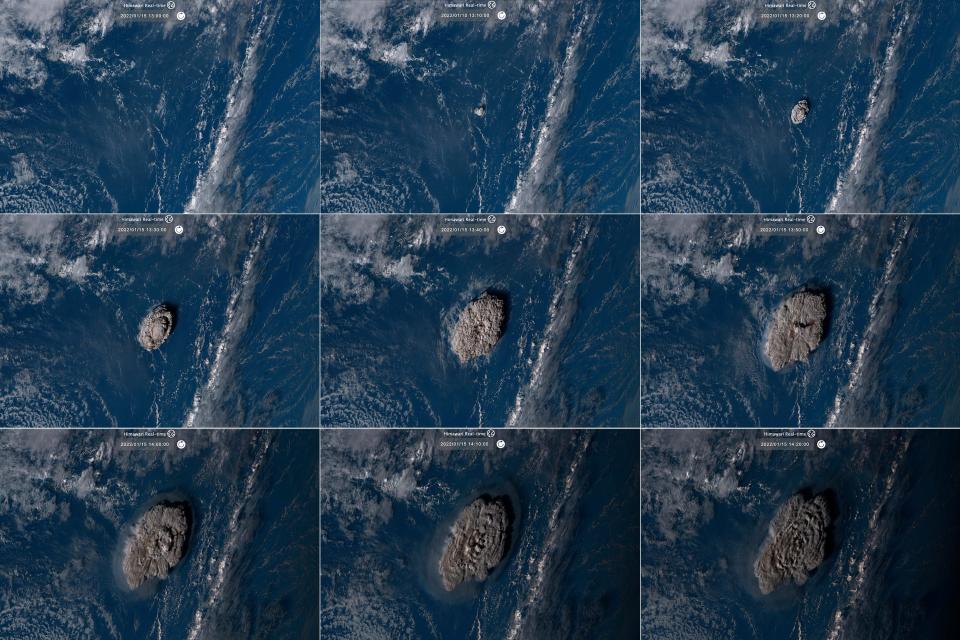Is 2023 the hottest summer on record? Yes, but climate change may not be solely to blame.
This year’s summer heat wave in Arizona has already killed 59 people, with 345 deaths now under investigation.
Our July set a new record for the most consecutive days (31) with high temperatures at or above 110 degrees, reports The Arizona Republic’s Fernando Cervantes Jr.
That we know.
What we don’t know is why.
Why are we seeing these record-smashing temperatures this year in metro Phoenix and across the globe?
Is climate change the only cause of extreme heat?
Some will scoff at the question. But it’s actually a mystery that will take time to study and understand.
Yes, climate change undoubtedly played a role.
Prior to this summer, the warmest eight years on the planet had all been recorded since 2015, reports the World Meteorological Organization.
Heat deaths are spiking: Extreme heat is killing more people – and the worst is yet to come
But well before this summer, scientists were predicting that other factors could significantly raise this year’s temperatures to extreme levels across the globe.
One of those factors was a massive underwater earthquake near the island nation of Tonga more than a year and a half ago.
On Jan. 15, 2022, the Hunga Tonga-Hunga Ha’apai underwater volcano erupted. The energy released was enormous – so powerful it was the most violent eruption anywhere in the world since Mount Pinatubo blew its stack in the Philippines in 1991.
Did the Tonga volcano eruption cause this year's heat wave?
A year later, scientists mostly from Oxford University published a study in the peer-reviewed Nature Climate Change that noted the Tonga-Hunga volcanic eruption was extraordinary in that it pushed an enormous amount of water into the atmosphere.

Most volcanic eruptions spew large amounts of sulfur dioxide into the atmosphere that form particles that can actually reflect the sun and cool the planet.
This one did that as well, but was offset and exceeded by the amount of moisture it sent skyward – roughly the equivalent of 58,000 Olympic-size swimming pools, according to separate research done by NASA’s Jet Propulsion Laboratory.
Because water vapor is a greenhouse gas, “it is possible that over a multiyear period Hunga Tonga–Hunga Ha’apai will cause a temporary increase in global surface temperatures,” the Oxford group noted.
As reported in the U.K. climate-science website CarbonBrief, the Oxford group reported that the eruption had increased the likelihood that global temperatures would exceed 1.5 degrees Celsius (nearly 35 degrees Fahrenheit) above pre-industrial levels at least once by 2026.
Two caveats to the undersea volcano research
The number 1.5 C is an important threshold that nations agreed to try to stay under, based on the 2015 Paris climate accords.
The study authors said the volcano had raised the chances by 7 percentage points of exceeding 1.5 C at least once by 2026, making “imminent 1.5 C exceedance” a greater possibility.
In separate research, professor Pasquale Sellitto of the Interuniversity Laboratory of Atmospheric Systems says the Tonga research is “very reasonable” but raised two caveats:
The paper assumes the water pushed upwards is “globally well mixed,” when, in fact, its plume was “confined in the southern atmosphere,” reports CarbonBrief.
The other is that the paper does not include the cooling influence of the sulfur dioxide.
Dr. Luis Millán from NASA’s Jet Propulsion Laboratory says more models will need to be run and studied to “discern the small Hunga’s contribution from the anthropogenic (caused by human activity) one.”
El Nino could increase temperatures
Another factor in the Pacific Ocean that was expected to raise world temperatures this year has been the cyclical climate pattern known as El Nino, which returned at the beginning of this summer.

El Nino is the warming phase of an “irregular but periodic variation in wind patterns and sea surface temperatures over the tropical eastern Pacific Ocean,” as explained by the German international broadcast news network Deutsche Welle.
Its cooling phase is known as La Nina, which we had experienced the prior three years.
The record high heat we are seeing this year is more likely to occur during the El Nino cycle, Chris Hewitt, head of climate services at the World Meteorological Organization, told Deutsche Welle.
And hold on to your seat. We are not likely to feel the full effect of this El Nino until 2024.
Do candidates care about climate change? Climate change isn't a top issue for Democrats or Republicans. Record heat should change that.
Does pollution make it hotter?
Another significant factor that could be turning up the heat are the pollution controls placed on global shipping.
The International Maritime Organization has placed new limits on ocean ships to reduce their sulfur emissions. Those new regulations came into full force in 2020 and have cut sulfur emissions by more than 75%.
Opinion alerts: Get columns from your favorite columnists + expert analysis on top issues, delivered straight to your device through the USA TODAY app. Don't have the app? Download it for free from your app store.
As explained above, sulfur particles in the lower atmosphere act as a reflector of sunlight and thus a cooling agent on the planet. Fewer sulfur emissions from ocean ships means “less sunlight is bouncing back out to space, and is instead being absorbed by the oceans below,” The Economist reports.
Another factor is what happens when earth undergoes an interglacial period as we’re in now – the end of an ice age. The earth develops more tropical wetlands that, as they die, produce methane gas, whose atmospheric changes can heat the planet.
None of this is to dismiss climate change and the real impact it has on the world. But what we perceive as an acceleration of conventional climate change might have been stoked by other factors as well. Something we need to consider as we try to understand our changing planet.

Phil Boas is an editorial columnist with The Arizona Republic, where this column first published. Email him at phil.boas@arizonarepublic.com
You can read diverse opinions from our Board of Contributors and other writers on the Opinion front page, on Twitter @usatodayopinion and in our daily Opinion newsletter. To respond to a column, submit a comment to letters@usatoday.com.
This article originally appeared on Arizona Republic: Why is it so hot? Climate change may not be the only explanation

